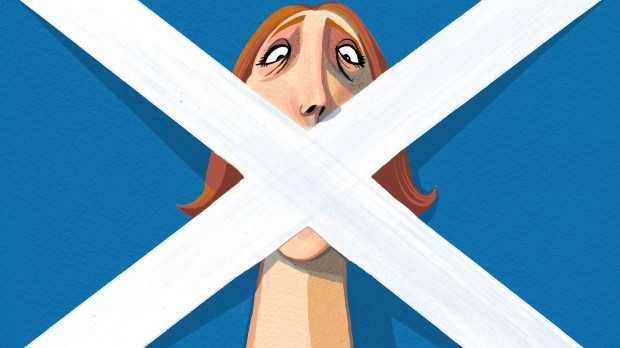How much should we pay to save life? The question is often viewed as distasteful: you can’t put a price on human life. But resources are finite. Even if the only purpose of life was to prolong it for as long as possible, there would be limits to healthcare affordability. So if resources are limited, how can their application be made fairly? And how can this logic be applied in a pandemic?
One element when establishing a fair method is to consider life years saved rather than lives saved. This recognises that someone of my age (55), who has already enjoyed two-thirds of his likely life span, should be a lower priority for treatment than a child who has had barely a tenth of theirs. A vampire society might sacrifice the young to prolong the lives of the old, but most of us would reject this, whatever our age. Counting life years also acknowledges that life-saving is always temporary; that medicine is really about prolonging life.
Every government has a way of deciding when a life-saving intervention is too expensive. The UK has the National Institute for Health and Care Excellence, which considers the life years saved (quality adjusted, but we can neglect that here) when approving NHS treatments. Broadly speaking, Nice approves interventions if the ‘cost per life year saved’ is below £20,000 to £30,000. This consistent approach is a second element of fairness. If, for example, treatment were allowed that cost £40,000 per life year saved for one person while denying two others treatment that cost £20,000 per life year, then that would effectively be buying life for one person by denying it to two others.
So how do the various measures used to fight Covid-19 compare to the usual Nice threshold? A precise answer is not possible, but a rough figure is. Shutting down entire sections of the economy devastated tax revenue, and the government borrowed money not just to fill the gap but to increase public spending. This has risen by £135 billion this year alone, according to the Office for Budget Responsibility, which estimates that the national debt will grow to be £550 billion higher than was predicted at the start of the year. Obviously, this figure ignores effects on the economy not mitigated by government action, so true costs will be higher.
But let’s be cautious about the costs of lockdown and its associated measures and let’s be optimistic about what those lockdown measures achieved. The Department of Health and Social Care’s estimate of the life that might have been lost without such Covid–related expenditure is about three million life years. On this basis, the Covid measures cost just over £180,000 per life year.
These costs would be in line with the usual Nice threshold only if we had faced a 20 million life year loss. That would have required a disease as deadly as the 1918 influenza, which, barring the possibility of future lethal mutation, Covid-19 is not. Meanwhile, the usual Nice threshold remains for other conditions. Just a few months ago, funding for Dupixent, a drug proven effective at cutting asthma attacks, was rejected for regular NHS funding on the grounds that it was too expensive. So are we effectively saying that each Covid-19 victim is more worthy of saving than six or seven victims of other diseases?
Some may think that this is really just another ‘money vs life’ argument, or that there is no way to prevent substantial future life loss from non-Covid causes with the resources devoted to the pandemic. But the figures for life loss associated with economic deprivation alone suggest otherwise.
Before the current economic shock, the gap in life expectancy between the richer and poorer segments of British society amounted to some 200 million life years lost for the current UK population, which is somewhere around 70 times what Covid might have caused. Even the firmest believer in laissez-faire would have to concede that some percentage of that loss is preventable by relatively low-cost government intervention: smarter welfare, community support, etc. The 2010 Marmot report into health in-equality strongly implies that the percentage is quite high. What we spend now to save life from Covid-19 is obviously not being spent to prevent this other life loss.
As the country begins its social and economic recovery, it could be that welfare spending will surge to minimise the harm inflicted by the pandemic and care for those suffering depression and other illnesses that are associated with recessions. But it’s also possible that we may hear, once again, talk about ‘hard choices’ to be made by the Chancellor, the need to balance the books. More interventions to help with the effects of job insecurity, long-term unemployment and educational damage caused by lockdown might be judged too expensive. It might not be long before the normal rules of fiscal gravity (and the value of lives) are applied again. We could find out that the current approach taken to fight the virus — to spend as much as it takes — is not applied to help the hundreds of thousands of its indirect victims. Then the idea of a trade-off might seem more tangible than it does now.
At the start of the pandemic there was arguably no time for such calculations. But as we face what is described as a second wave, it is surely time to give more attention to the indirect effects of lockdown, the inevitable trade-offs, and how best to act in a way that saves the most life from all causes.
Got something to add? Join the discussion and comment below.
Get 10 issues for just $10
Subscribe to The Spectator Australia today for the next 10 magazine issues, plus full online access, for just $10.
Simon Wood is professor of computational statistics at the University of Edinburgh.
You might disagree with half of it, but you’ll enjoy reading all of it. Try your first month for free, then just $2 a week for the remainder of your first year.














Comments
Don't miss out
Join the conversation with other Spectator Australia readers. Subscribe to leave a comment.
SUBSCRIBEAlready a subscriber? Log in